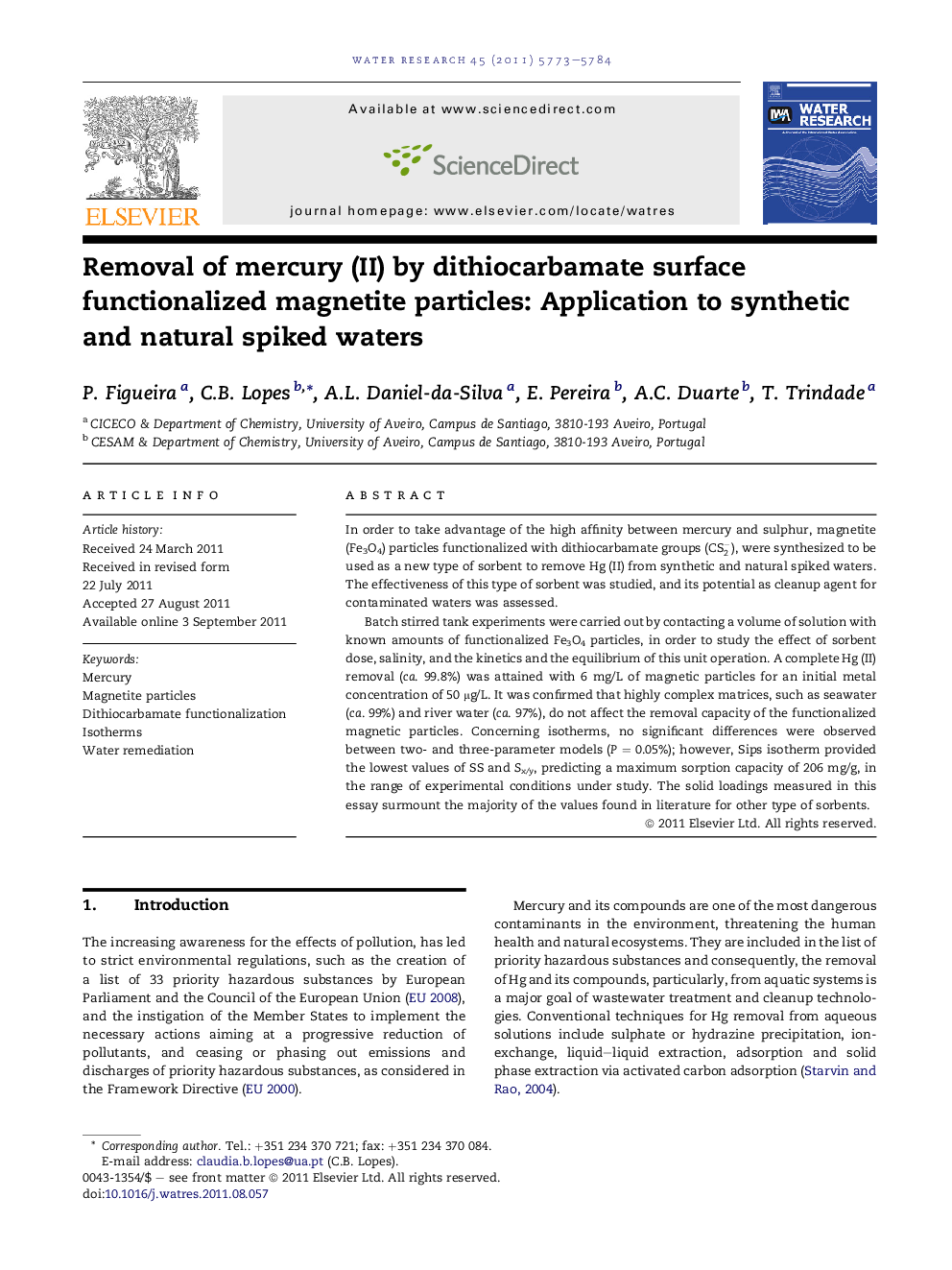| Article ID | Journal | Published Year | Pages | File Type |
|---|---|---|---|---|
| 4483197 | Water Research | 2011 | 12 Pages |
In order to take advantage of the high affinity between mercury and sulphur, magnetite (Fe3O4) particles functionalized with dithiocarbamate groups (CS2−), were synthesized to be used as a new type of sorbent to remove Hg (II) from synthetic and natural spiked waters. The effectiveness of this type of sorbent was studied, and its potential as cleanup agent for contaminated waters was assessed.Batch stirred tank experiments were carried out by contacting a volume of solution with known amounts of functionalized Fe3O4 particles, in order to study the effect of sorbent dose, salinity, and the kinetics and the equilibrium of this unit operation. A complete Hg (II) removal (ca. 99.8%) was attained with 6 mg/L of magnetic particles for an initial metal concentration of 50 μg/L. It was confirmed that highly complex matrices, such as seawater (ca. 99%) and river water (ca. 97%), do not affect the removal capacity of the functionalized magnetic particles. Concerning isotherms, no significant differences were observed between two- and three-parameter models (P = 0.05%); however, Sips isotherm provided the lowest values of SS and Sx/y, predicting a maximum sorption capacity of 206 mg/g, in the range of experimental conditions under study. The solid loadings measured in this essay surmount the majority of the values found in literature for other type of sorbents.
Graphical abstractFigure optionsDownload full-size imageDownload high-quality image (104 K)Download as PowerPoint slideHighlights► Magnetic particles functionalized with dithiocarbamate groups as sorbents for Hg. ► High removal efficiency in natural waters. ► Increasing matrices’ complexity will not decrease particles efficiency. ► Easy removal of sorbent from solution due to the magnetite ferrimagnetic properties.
